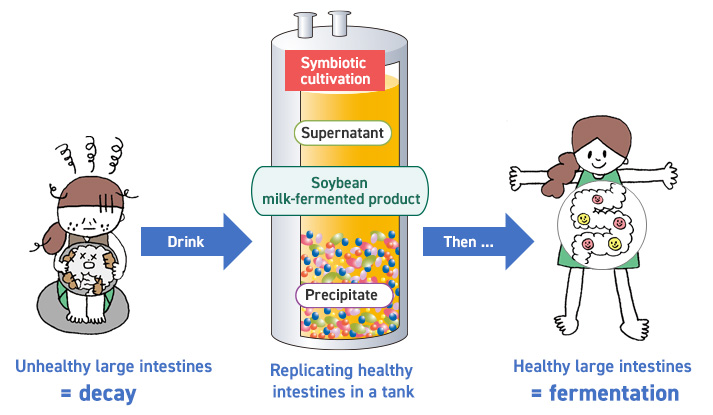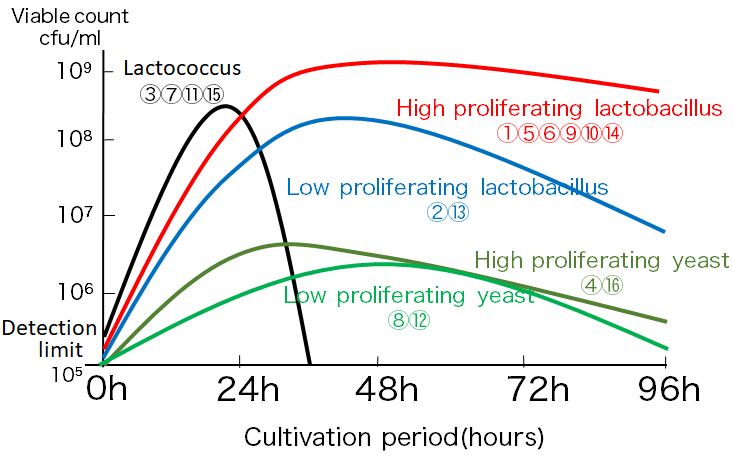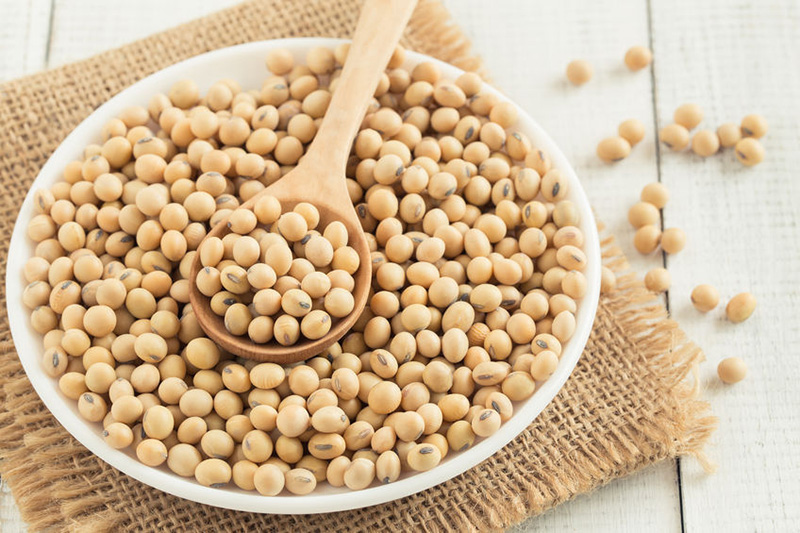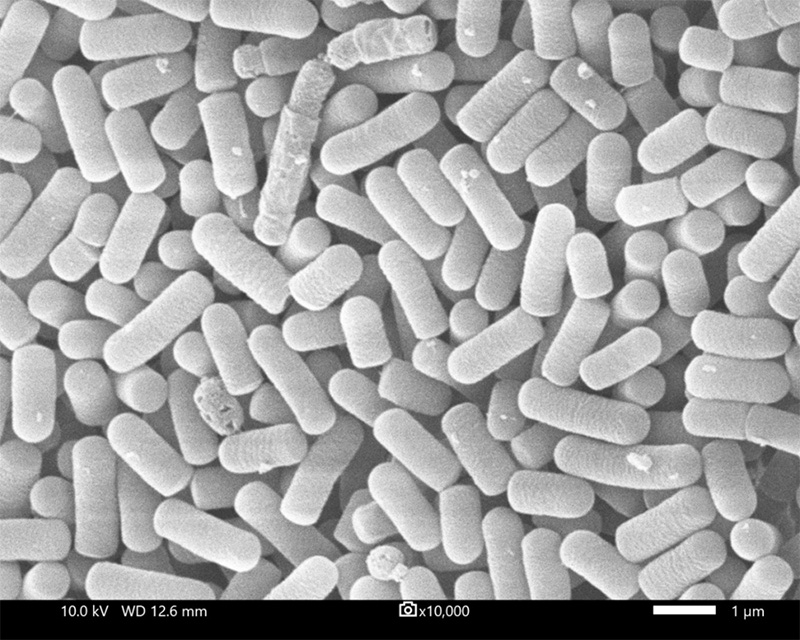About the Research
- Top
- About the Research
- What is Soybean milk-fermented product?
What is Soybean Milk-Fermented Product (SFP)?
Soybean Milk-Fermented Product Over Living Lactic Acid Bacteria
Soybean milk-fermented product (SFP) is a functional food made from 12 strains of lactic acid bacteria and 4 strains of yeast on a soybean culture medium.
Diverse nutritional ingredients, including “metabolic components” like minerals, vitamins, peptides and organic acids created by bacteria in the fermentation process, dead bacterial cells that have finished their work (ie. bacterial cell components) and soybean-based compounds, all act to improve the intestinal flora, stimulate the immune system and make human beings healthier.

Mimicking a healthy-state intestine within a tank
Human beings are able to maintain their health first and foremost because enteric bacteria produce nutrients that human beings cannot create on their own within the fermentation tank called the large intestines in the human body. If fermentation conditions in the large intestines are poor, the whole process becomes a process of decay, which can lead to a variety of diseases.
Lactic acid bacteria are a representative group of probiotic beneficial to human health.
Lactic acid bacteria feed off of sugar and proteins and decompose them during their proliferation (fermentation) process, metabolizing them into a variety of nutrients such as amino acids and peptides.
However, simply consuming lactic acid bacteria does not ensure that they will reach the intestines and survive there, as the intestines are already host to a variety of bacteria that constitute the “intestinal flora” and there is very little room for the lactic acid bacteria to colonize the intestines and function (metabolize) there.
That is why it is more effective to consume “soybean milk-fermented product,” which is the metabolic product of lactic acid bacteria that have already fulfilled their roles within the tank.
Because ALA’s soybean milk-fermented product is a fermented liquid made from symbiotically cultivating several strains of lactic acid bacteria and yeast, it is close to the state of a healthy-state intestine, replicated within a tank.

What is symbiotic cultivation?
Biotechnology that allows bacteria to maintain its fermentation state for as long as possible
Yogurt is generally fermented using 1~3 kinds of bacteria. Meanwhile, soybean milk-fermented product uses 12 strains of lactic acid bacteria and 4 strains of yeast.
Because bacteria generally tend to struggle for power over other bacteria as they proliferate during the fermentation process, it is extremely difficult to cultivate multiple bacterial strains in the same culture.
The “symbiotic cultivation” method is a biotechnology that makes this possible.
What is important is that all bacterial strains remain alive to feed off of the nutrients in the culture for as long as possible in order to produce as many metabolites as possible. The presence of a conspicuously proliferating bacterial strain can cause other bacterial strains to not be able to proliferate before the fermentation process ends, thereby resulting in a fewer variety of metabolites.
At ALA, 16 strains of bacteria, carefully chosen based on their different traits, are fermented over a period of approximately 100 hours.

Symbiotic Relationship Between Lactic Acid Bacteria and Yeast
Lactic acid bacteria produce lactic acids during their proliferation (fermentation) process. However, once there is an overabundance of lactic acids, the lactic acid bacteria become unable to proliferate any further, ending the fermentation process.
Yeast helps the lactic acid bacteria’s fermentation process. This is because both lactic acid bacteria and yeast use one another’s metabolites to proliferate (ferment).
Yeast feeds off of the lactic acid created by the lactic acid bacteria to metabolize amino acids, vitamins and unsaturated fatty acids. Lactic acid bacteria, on the other hand, feed off of the metabolites created by the yeast to metabolize lactic acid.
The relaying of these metabolites between bacteria allows for a longer proliferation (fermentation) period, thereby creating more “soybean milk-fermented product.”
The Use of Soybean Milk (Soybeans) Over Milk
Health foods comprised of lactic acid bacteria, such as yogurt, generally use animal-based milks. However, one of the distinct features of ALA’s soybean milk-fermented product is that it uses soybean milk for its culture.
Soybeans, called “the meat of the fields,” are high in proteins and low in calories. They are also rich in various functional ingredients such as soybean isoflavone, which are noted for their female hormone-like functions.
The isoflavone incorporated in the ALA Corporation’s soybean milk-fermented product is furthermore converted into aglycone-type isoflavone, a more active form of isoflavone, in the bacterial decomposition process. Biotechnology further helps to draw out the full power of soybeans.

What are bacterial cell components?
Lactobacillus plantarum LP 284 Activates the Immune System!
Another important aspect of lactic acid bacteria is its “bacterial cell components,” which are produced from bacteria that have completed their fermentation process. The cell membrane and nucleus that compose the bacterial cell stimulate and activate the human immune system, regardless of whether the bacteria are alive or dead.
One trillion bacterial cell components per day are considered necessary for the bacterial cell components of lactic acid bacteria to activate the immune system. This translates to approximately 100 cups yogurt (※). Because the ALA Corporation’s soybean milk-fermented product contains a rich concentration of bacterial cell components (dead cells), it is much easier to consume the necessary quantity of these compounds.
Calculation based on a typical cup of yogurt (100g), which contains 10 billion lactic acid bacteria.

